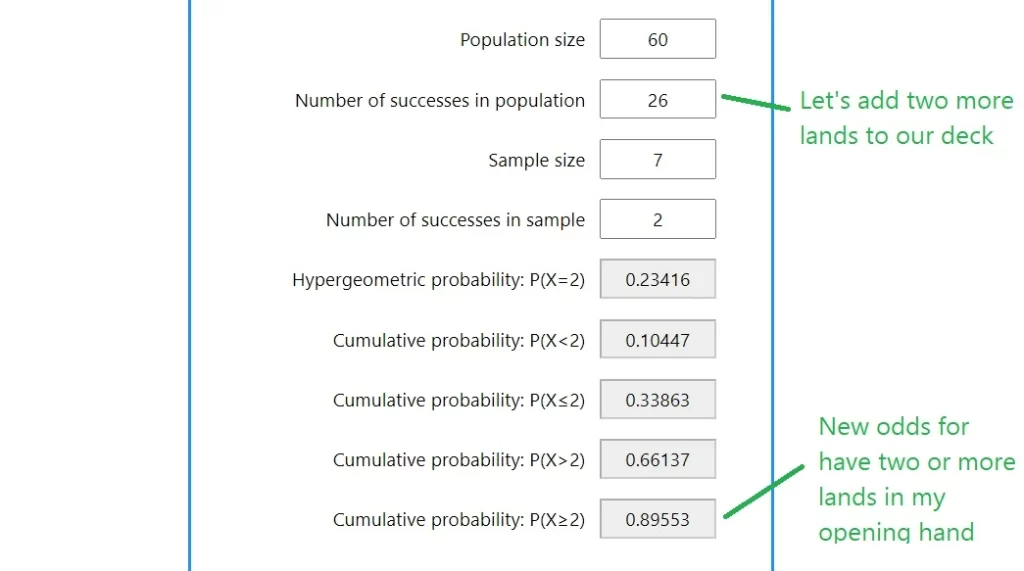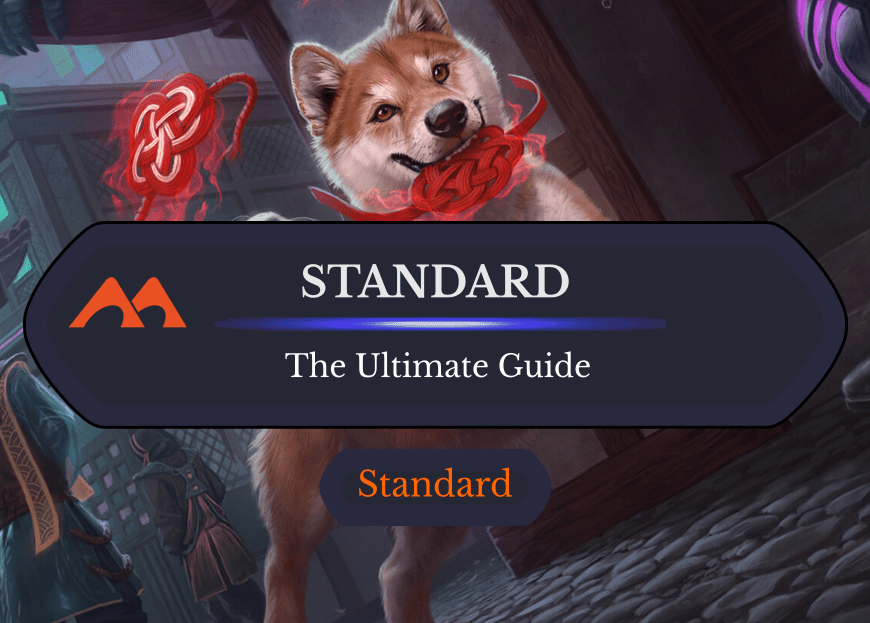Last updated on April 26, 2024

Forest | Illustration by Kev Walker
Magic: The Gathering combines strategy, skill, and a bit of luck. Lady Fortune has a well-documented fondness for fickleness, so sometimes she'll smile upon us and we'll high-roll and perfectly draw whatever we need…
… and sometimes she'll frown and we'll get royally screwed.
One of the most frustrating ways of getting screwed in MTG is when we have a hand full of awesome cards to play but we don't draw enough lands to play them. It's not just that we'll probably lose in this scenario – we don't even get to play the game!
That specific flavor of (un)fortune is what in MTG lingo is known as “mana screw”. In this article, we'll delve into what mana screw is, how to mitigate it, and the reasons behind its existence.
What Is Mana Screw in MTG?

Scalding Tarn | Illustration by Philip Straub
In MTG slang, you're “mana screwed” whenever you don't draw enough mana sources to cast your spells. For example, your hand is full of 3- and 4-drops, but you never draw your third land.
Mana Screw is so real that it's even a real card, from the tongue-in-cheek Unhinged set. “There was no darker or more evil creation in all the multiverse,” reads its flavor text, “than that of the mana screw.”
How to Stop Getting Mana Screwed
While there’s always some amount of bad luck involved, there are a number of things we can do to mitigate the risk of getting mana screwed:
Mulligan More
When you're dealt a suboptimal hand, don't be afraid to take a mulligan. Don't be greedy; if you don't have enough lands, or all your starting spells are too expensive, take the mulligan and hope for a better starting hand. While mulligans are costly (we'll have to trim our starting hand to six) and we're not guaranteed to get a good hand, it’s often better to mulligan than to keep a shaky hand.
Playing Enough Lands
The optimal amount of lands is a fairly complex topic, so take these just as a starting point.
Generally, for a 60-card deck in the Standard format (Modern and Legacy decks tend to have a bit fewer lands):
- Midrange decks (a mix of fast and slow spells) typically run 24-26 lands.
- Aggro decks (fast, low-cost spells and creatures) can drop the land count to 20-24 lands.
- Control decks may need 26-28 lands.
17 is the gold standard for the optimal land count in Limited formats (Sealed and Draft). You can cut one land if your deck has a low curve, and some formats may have specific effects that allow you to trim them a bit more: Lords of the Rings, for example, has 1-mana landcyclers like Troll of Khazad-dûm. But when in doubt, 17 lands is the way to go.
The optimal land count for Commander decks is around 37-42 lands, usually served with a large side dish of mana rocks.
And there's a caveat that’s specific for Best-of-One games in Magic Arena. For Bo1 games, Arena uses a hand-smoothing algorithm as illustrated by Sierkovitz in this tweet (the graphic shown is for Draft decks, but the algorithm applies to all Bo1 games):
The quick takeaway is: If you’re in doubt about cutting a land in your deck, and you’re playing Bo1 games in Arena, then cut the land.
Odds of Getting Mana Screwed
Math time!
To estimate the odds of getting mana screwed, what you need is either a good understanding of probabilities…
… or a handy Hypergeometric Distribution Probability Calculator like this one. Let's see some simple examples using a 60-card deck with just lands!
If I build a deck with the usual 24-land benchmark, what are the odds of my opening hand having two or more lands?

In the example above a “success” is a land, the “population” is all the cards in my deck, and my “sample” is my opening hand.
Since I have 24 lands in my 60-card deck, and I'd like to see at least 2 lands in my opening hand, this handy calculator tells me that my odds of seeing two or more are 85%. Odds of seeing exactly two lands are almost 27%.
What happens if I add two more lands?

With two more lands, odds of seeing two lands or more went from about 85% to 89%. The cost of my spells should be considered when deciding whether or not it's convenient to go with 26 lands. If I have a lot of cards that cost 3+ mana then I do want to see my third land as soon as possible. If most of my cards cost 1 or 2, I may even be tempted to trim my lands to 23.
But let's look now at the price to pay for adding more lands: being flooded.

The more lands my deck has, the higher the risk of having too many lands in my opening hand.
That's the game we're playing – trade-offs, trade-offs everywhere!
Last but not least: Say I stick with 24 lands, and I have two in my opening hand. What are my odds of seeing my third land in the next two cards I draw?
If I'm looking at my opening hand and I see two lands in it, I know my library now has 22 lands and 53 cards in total. The sample size in this case is 2, because that's how many cards I'll draw – my odds of finding at least one land before I'm land-starved are 66%.
Are those odds good enough?
If I have a couple of 2-drops in my opening hand and I'm playing an aggressive deck with cheap creatures, then yeah, this hand is a keep – I can do a lot with just two lands.
But if my hand only has cards that cost 3+ mana, and my deck has expensive cards, then this is probably a hand I don't want and I would take the mulligan.
Needless to say, you can make a more complex analysis by also considering your mana dorks, mana rocks, ramping effects, card draw, etc. Such analysis falls outside the scope of this article, but I do encourage you to try playing with numbers a bit and find out for yourself how the probabilities change. Numbers are fun!
Mana Screwed vs. Color Screwed
While mana screw is about not drawing enough mana sources, color screw is when you can't produce the right colors of mana to cast your spells. If your commander is Niv-Mizzet, Parun (as it should be, because they’re factually and objectively awesome) and your mana is all blue, then you're color-screwed.
The huge difference with mana screw is that there's a straightforward solution to being color-screwed: You can play a mono-color deck. In that case, odds of being color-screwed drop to exactly zero.
Of course… there are trade-offs everywhere. What mono-color decks gain in consistency they lose in deck-building flexibility. If you play a mono-red deck, your pristine mana base will remove the risk of color screw – but now you can only fit red cards, while multi-color decks have more choices, synergies and combos at their disposal.
Mana Screwed vs. Mana Flooded
Mana flood is the opposite of mana screw: While mana screw is not drawing enough lands, mana flood is drawing nothing but lands.
In other words, being literally flooded with lands and mana sources, without drawing enough spells.
It's basically the reason why, in practice, we can't avoid mana screws. If my 60-card mono-black deck only has 6 spells in it and they all cost 1 mana, then my odds of being mana-screwed are effectively zero (I'll have at least 1 land in 100% of my opening hands)…
… but most of the time I'll draw only lands, or just a couple of puny creatures in the whole game. Not a fun way to play Magic!
Why Does Mana Screw Exist in Magic?
Mana screw exists in Magic for two reasons: randomness, and the land system.
Randomness is inherent to all card games, from Poker and Bridge to Magic and other CCGs. Sometimes we draw what we need to win, sometimes we don't. That's just how it is!
Mana screw, on the other hand, is much more tightly tied to Magic.
Following Hearthstone's footsteps, the majority of digital CCGs have streamlined mana to something you automatically get every turn. This has two cool effects: On the one hand you know with certainty that you'll have 4 mana by turn four, and on the other your deck consists entirely of playable cards (since you don't have to add lands to your deck, it's all creatures and spells). And these games have also discarded colors. All mana is just mana – all cards are colorless, if you will.
But, of course… trade-offs! The deck-building rules are a lot stricter in those games. In Legends of Runeterra, for example, there are 10 different “regions” (a bit similar to Magic's colors), but you can only have two in your deck – pretty much like Magic ruling out having more than two colors in your deck.
So, in a very real way, the frustration that mana screw and color screw bring is the price we pay for having the most deck-building flexibility and freedom.
A little bit of MTG trivia: There's a very old card, Nevinyrral's Disk, which is a tribute to sci-fi giant Larry Niven (just try to read the card's name backward and you'll notice why). And, apparently, that's because the land mana system that we love to hate was inspired by one of his books.
Does Pile Shuffling Help Prevent Mana Screw?
The short answer is “Yes”, but it comes with a big “but” attached to it.
Any form of shuffling that doesn't make your library's order and positioning completely random is strictly forbidden.
Here's the exact wording from Magic's Comprehensive Rules:
103.3. After the starting player has been determined and any additional steps performed, each player shuffles their deck so that the cards are in a random order. Each player may then shuffle or cut their opponents’ decks. The players’ decks become their libraries.
And here are the MTG Tournament Rules:
3.10 Card Shuffling – Decks must be randomized at the start of every game and whenever an instruction requires it. Randomization is defined as bringing the deck to a state where no player can have any information regarding the order or position of cards in any portion of the deck. Pile shuffling may not be performed other than once each at the beginning of a game to count the cards in the deck.
In other words: nothing you do while shuffling can mitigate MTG's randomness. That's what deck-building, mulligans and piloting skills are for!
Wrap Up

Island (Doctor Who) | Illustration by Svetlin Velinov
Mana screw is intrinsic to Magic. It introduces an element of variance and unpredictability, adding diversity to each game. As Magic's head designer Mark Rosewater notes in his Kind Acts of Randomness article, “Randomness makes games more fun, more repeatable, and more skill-testing.”
Or take it from Julius Caesar himself: “Fortune, which has a great deal of power in other matters, but especially in war, can bring about great changes in a situation through very slight forces.” Strategy is all about knowing when to seize the opportunity while accepting that, yeah… you can get royally screwed sometimes.
I hope you've enjoyed this Mana Screw overview, and if you have comments or feedback (or want to vent about a particularly painful streak of bad luck) do stop by the Draftsim Discord or ping me on the social network formerly known as Twitter.
And may Fortune smile upon us all!
Follow Draftsim for awesome articles and set updates:

Add Comment